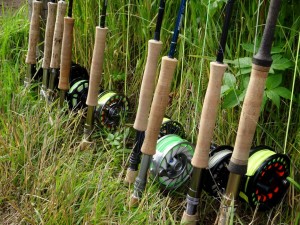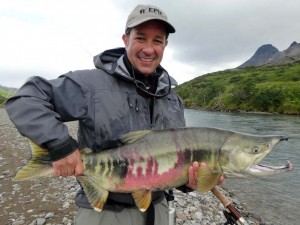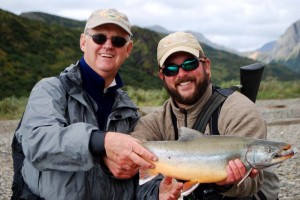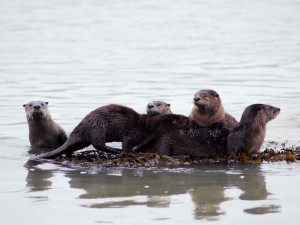Epic Blog
Alaska Fishing Season Summary, 2013
10.18.13
Alaska Fishing Season Summary, 2013, Alaska Wilderness SAFARI
Fishing
Overall, fishing was excellent this year. Compared to 2012 which offered noticeably late salmon runs, the run timing in 2013 was typical.
The pink salmon run was huge (we get a strong run every year on the Pacific side of the Alaska Peninsula; many places in Alaska only receive big pink runs in even years). The river and tidal flat were absolutely choked with pinks from late July through the end of August, when the die-off began and rapidly accelerated into September.
The chum salmon run seemed typical in timing and numbers. Although we did notice good numbers of larger than average chums landed this season.
The real news is the improvement of the silver salmon run. After a noticeably poor run of silvers in 2012 (common throughout many parts of Alaska), 2013 definitely offered better numbers in SAFARI camp’s home waters. Because of very healthy water levels the silvers by-passed the tidal flat, quickly running up and into the river. So the most productive fly fishing for silvers was actually in the river this season – the tidal flat was slower than normal for September.
Dolly Varden fishing was excellent, as usual, with large numbers of average-sized fish in our bay and river system. However, we definitely saw some very large dollies landed. The greatest concentration of fish were throughout mid river and the upper stretches of lower river. The lowest part of the river held fewer fish this year, and the upper river only fished well in isolated areas (immediately around Lion’s Head, for example.)
Halibut fishing in the bay was strong through the end of August. September proved far more challenging, when we experienced a sharp drop off in halibut numbers – we haven’t seen this happen to this extent in 10 or so years. Cod fishing was light throughout 2013. But we experimented, with great success, in a new area for black rockfish.
Wildlife
The wildlife highlight of 2013 (for me personally) was seeing a school of salmon sharks working the far side of Nakalilok Bay in late July. Second most noteworthy, the bear activity was lighter than normal. (Keeping this in perspective, though, this means in July and August we were only watching 2 to 6 bears at a time, rather than 6 to 10; bears were seen throughout the season on a daily basis, just the numbers were down compared to an average year. It was kind of a nice break.)
We also observed a few caribou, a couple of moose, lots of river otters, a few fox and sea otters, and lots of seals (especially around Eban Rock). Eagle sightings and activity were slightly up this season. No wolves were seen this year – just wolf tracks. Whale sightings were normal in July through mid August, then fairly quiet the rest of the season. Multiple species of sea birds were seen throughout the season, as usual, and we did see some common loons in the bay (which we don’t see too often). September brought flocks of migrating ducks and geese.
General
June and July were sunny and drier than normal in Alaska. August and September were wetter than average. The positive side of regular light rain (a couple of times it was heavy) is we had extremely healthy river flows throughout the entire Alaska fishing season, which of course, bodes very well for future generations of salmon and dollies and all the other wildlife that depend on them. And that’s a good thing.
Posted in All Posts, Fishing, SAFARI





